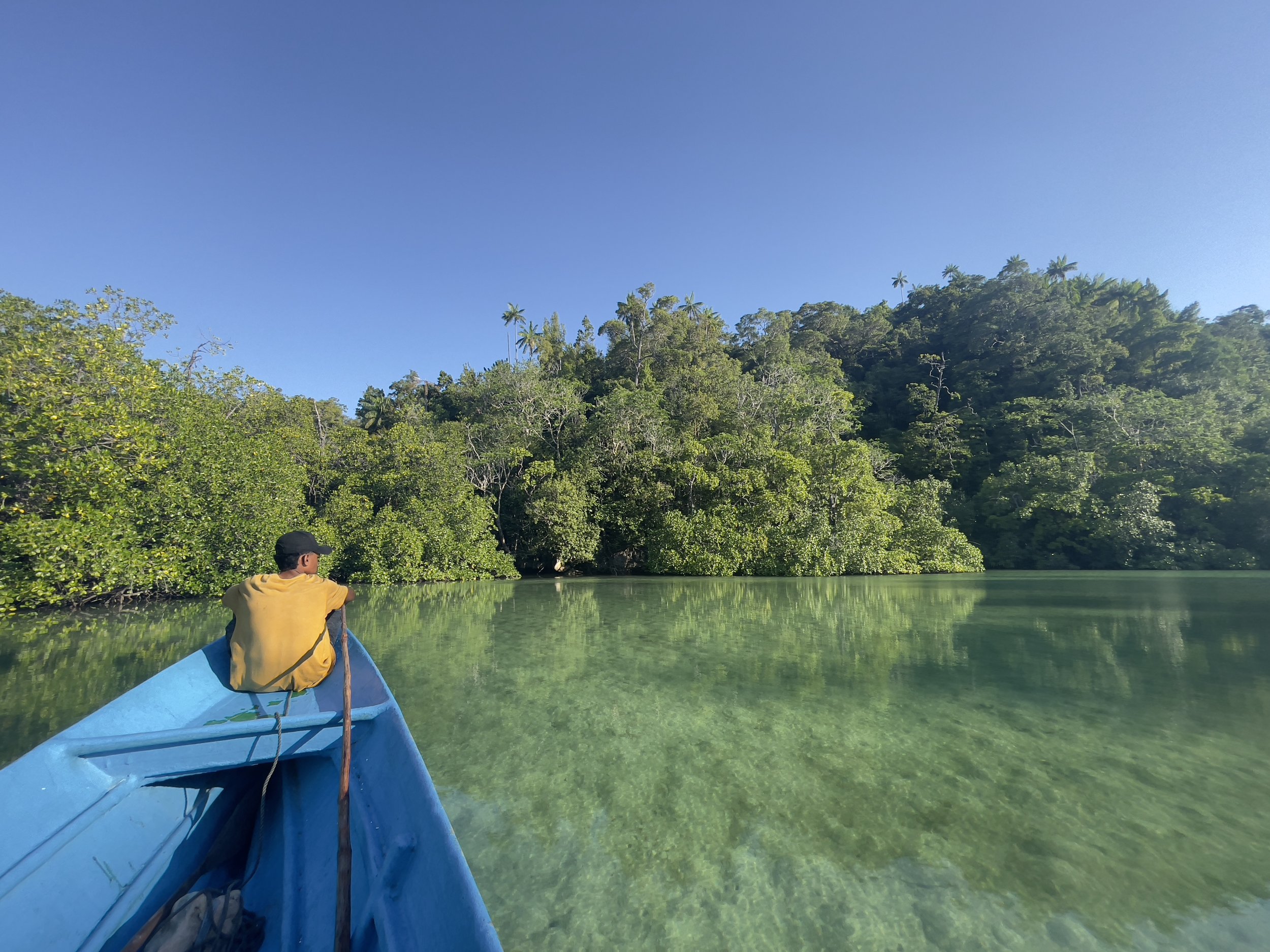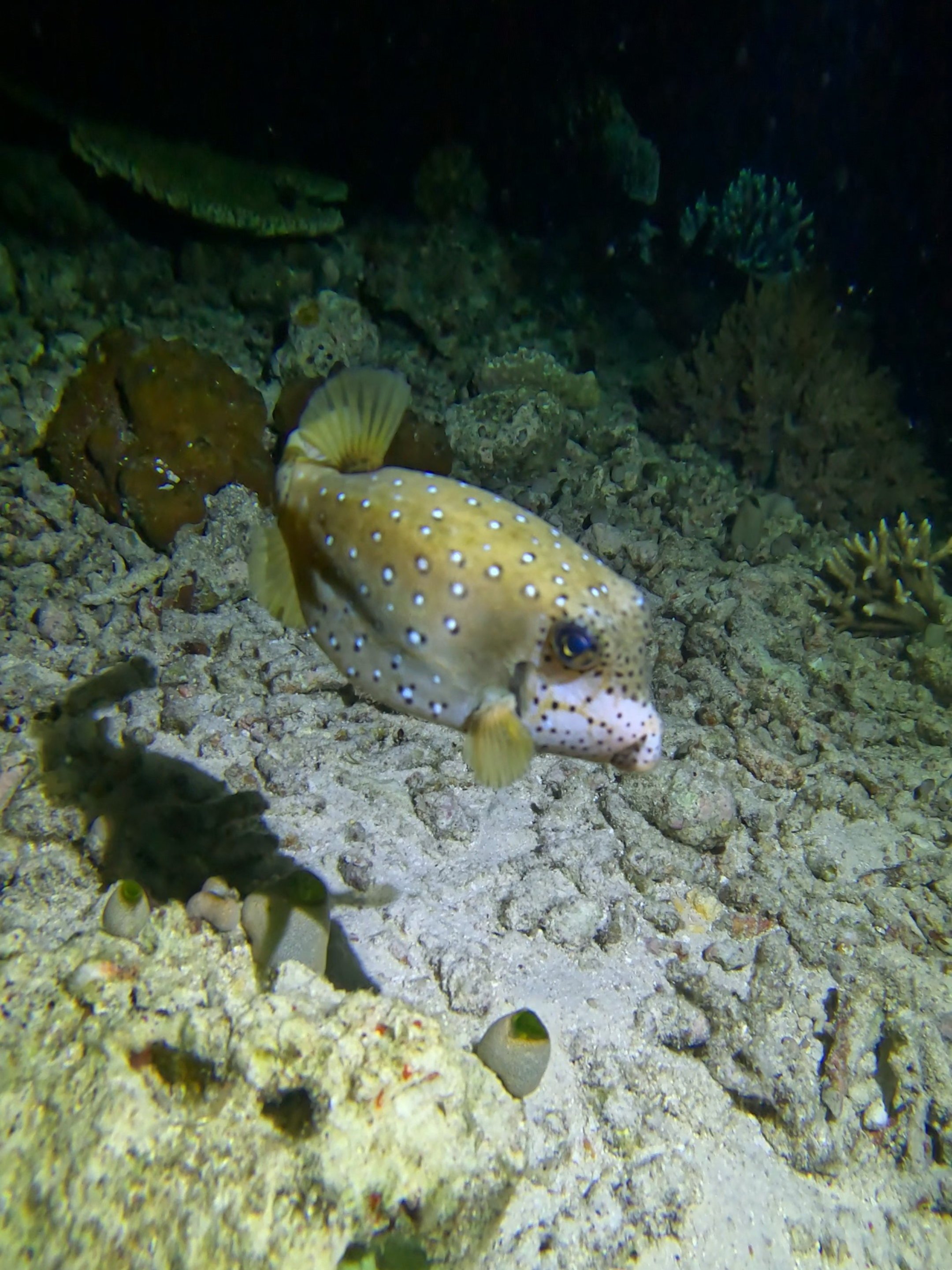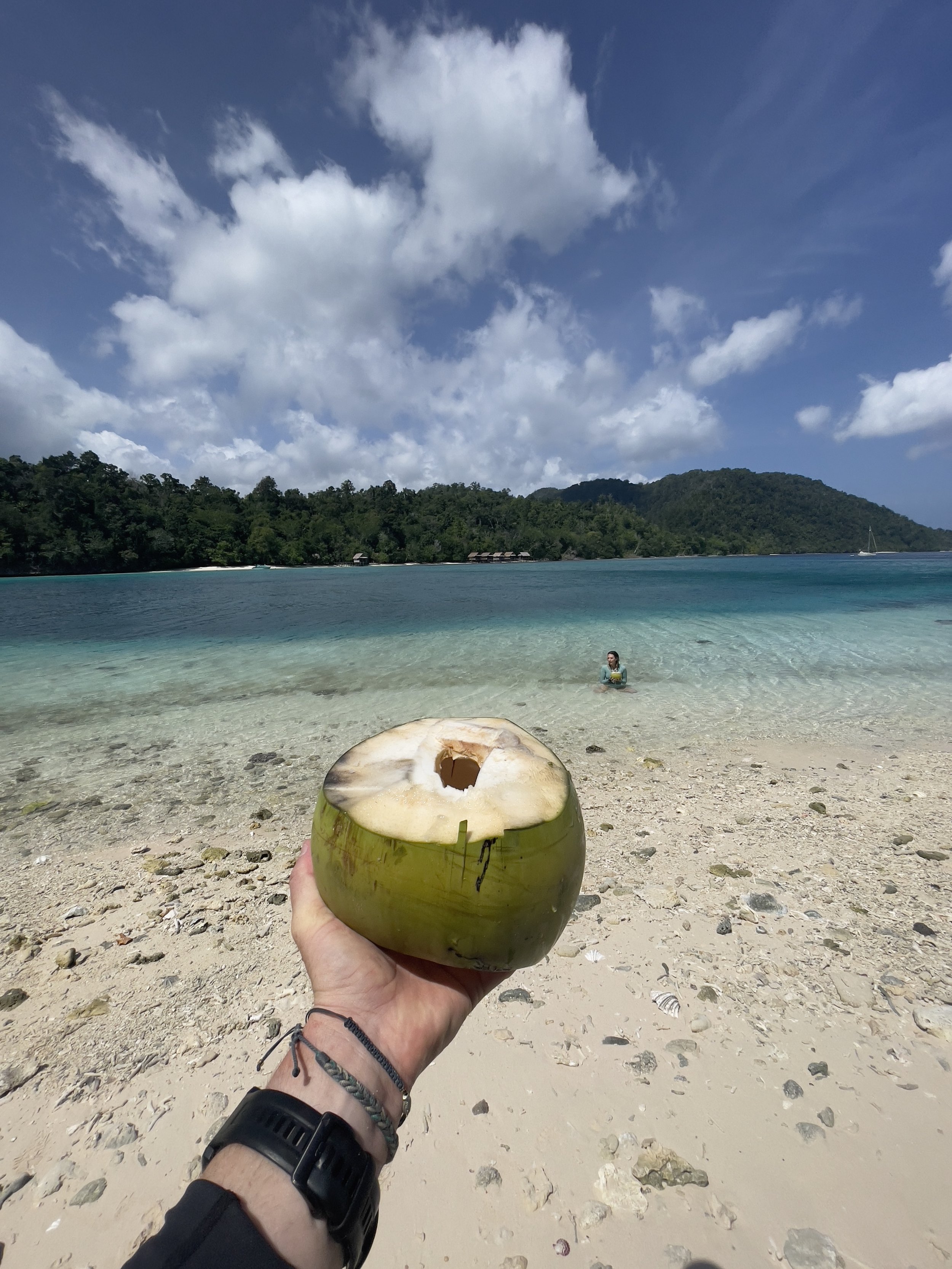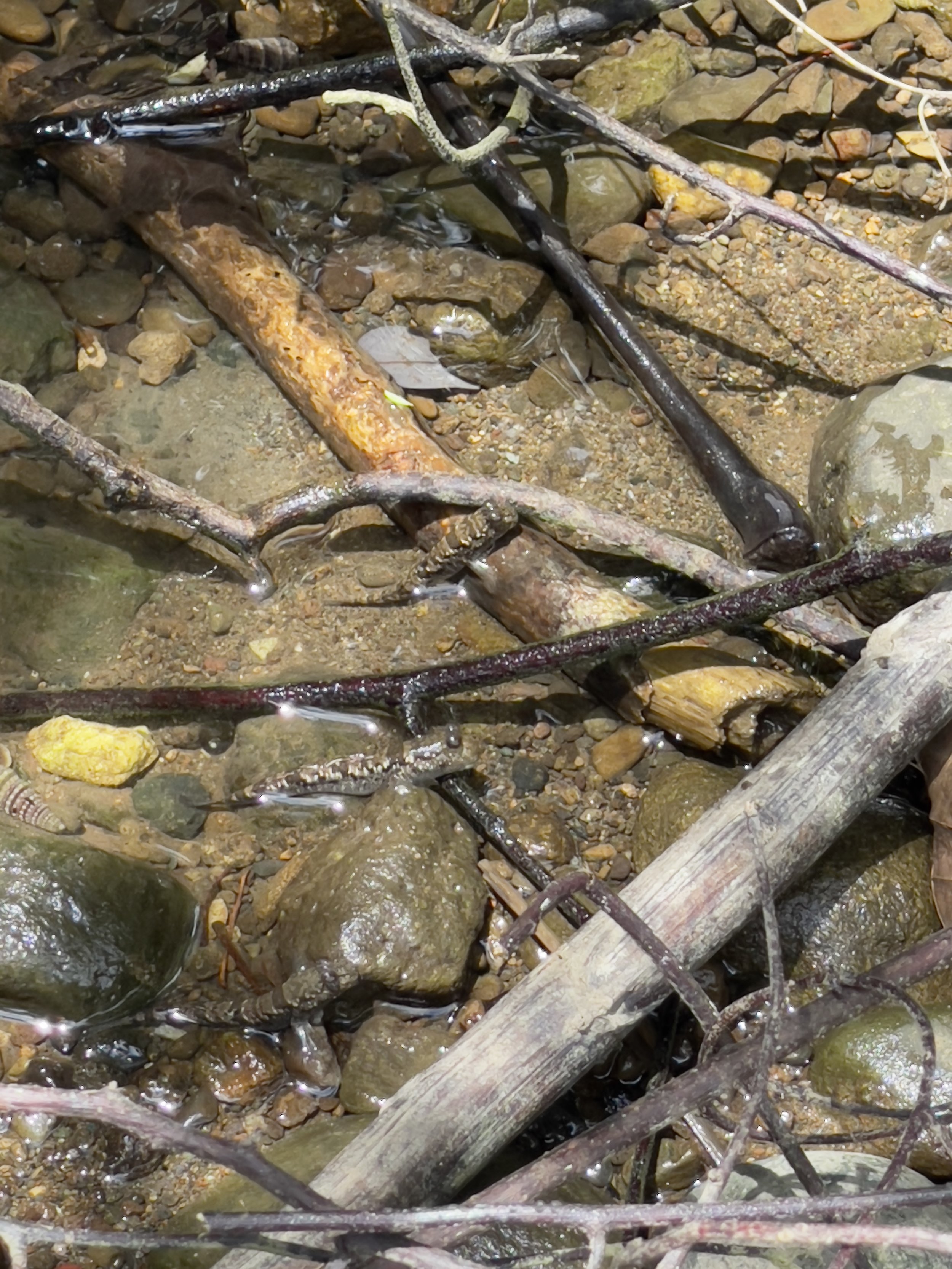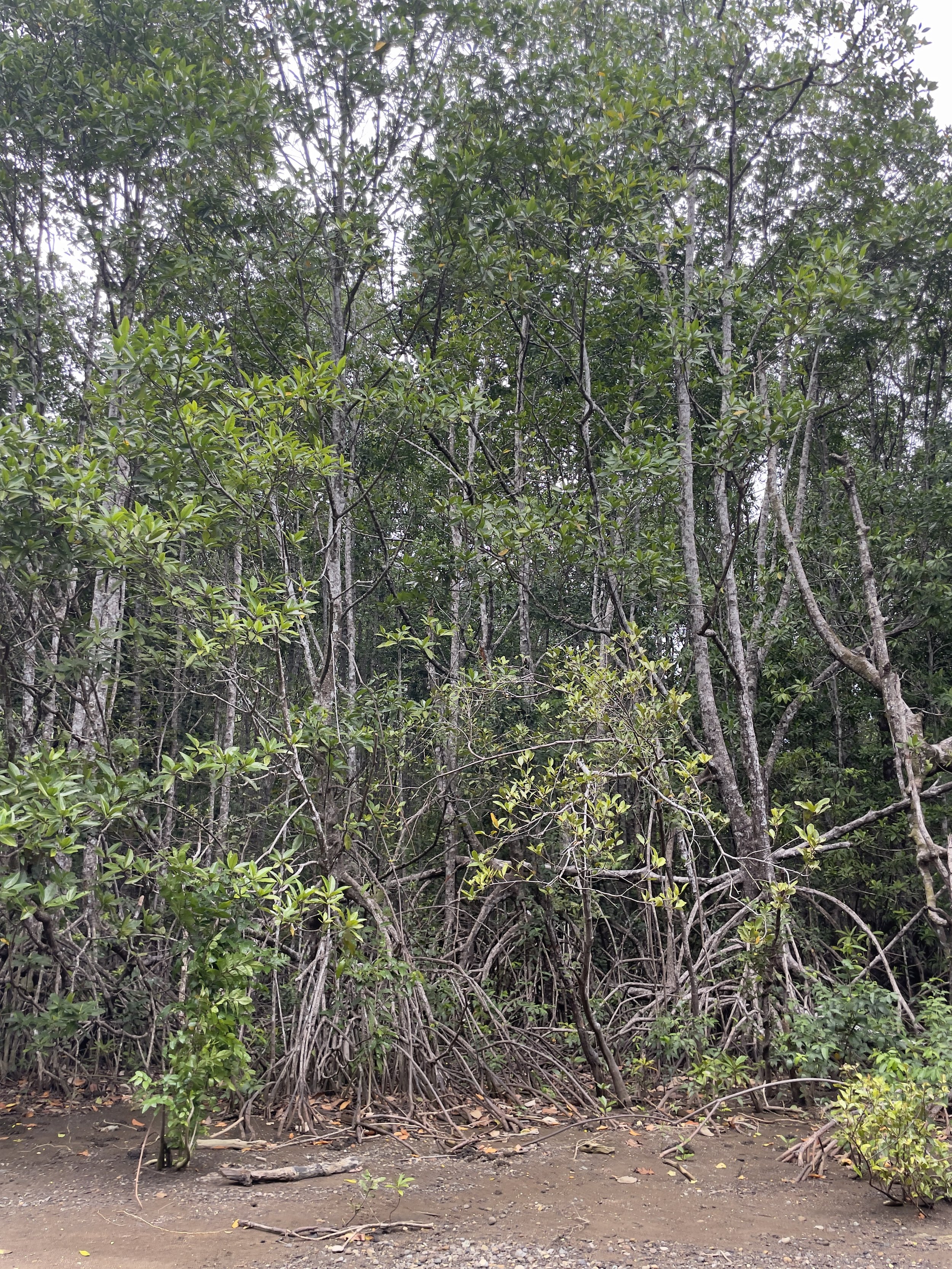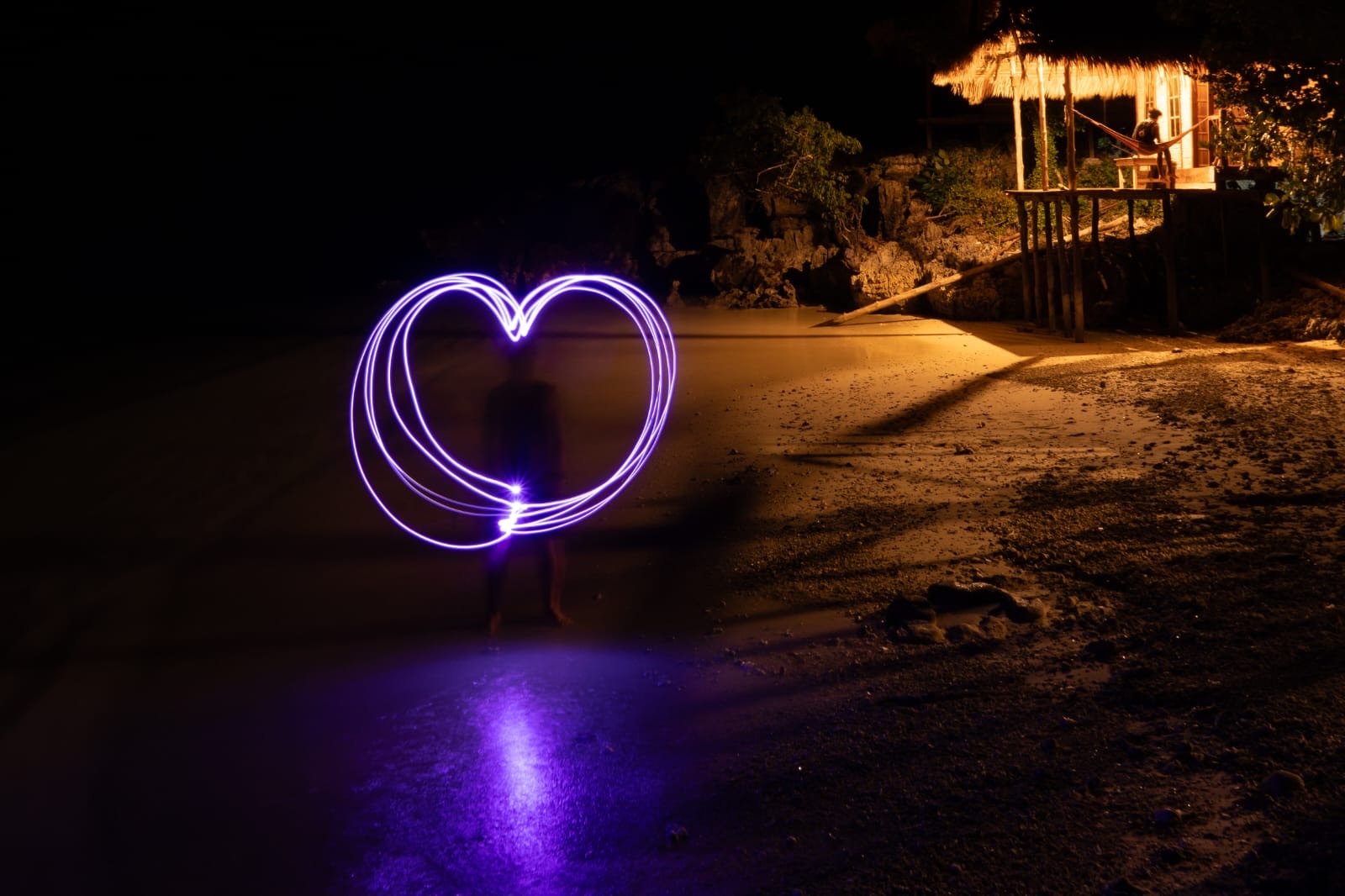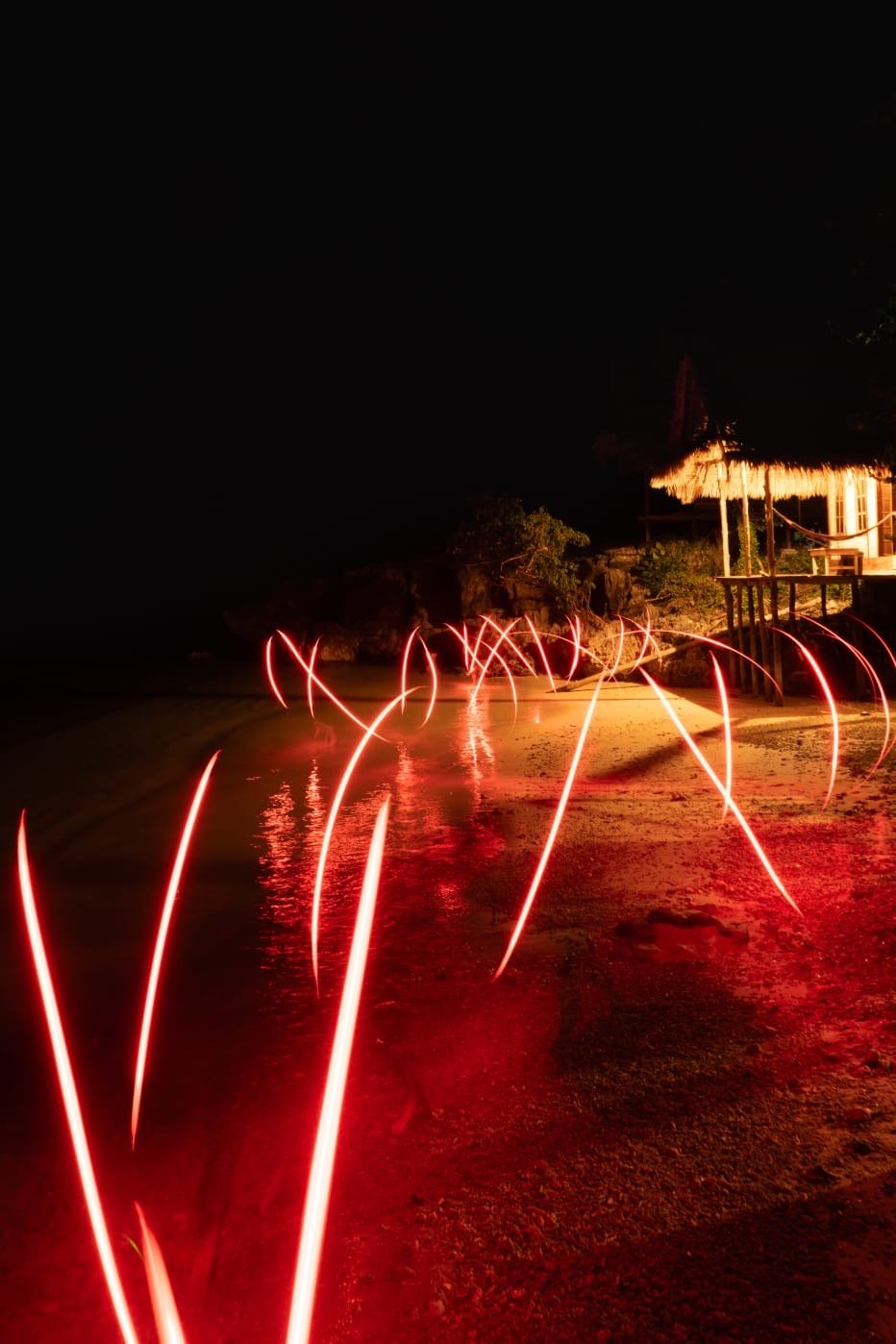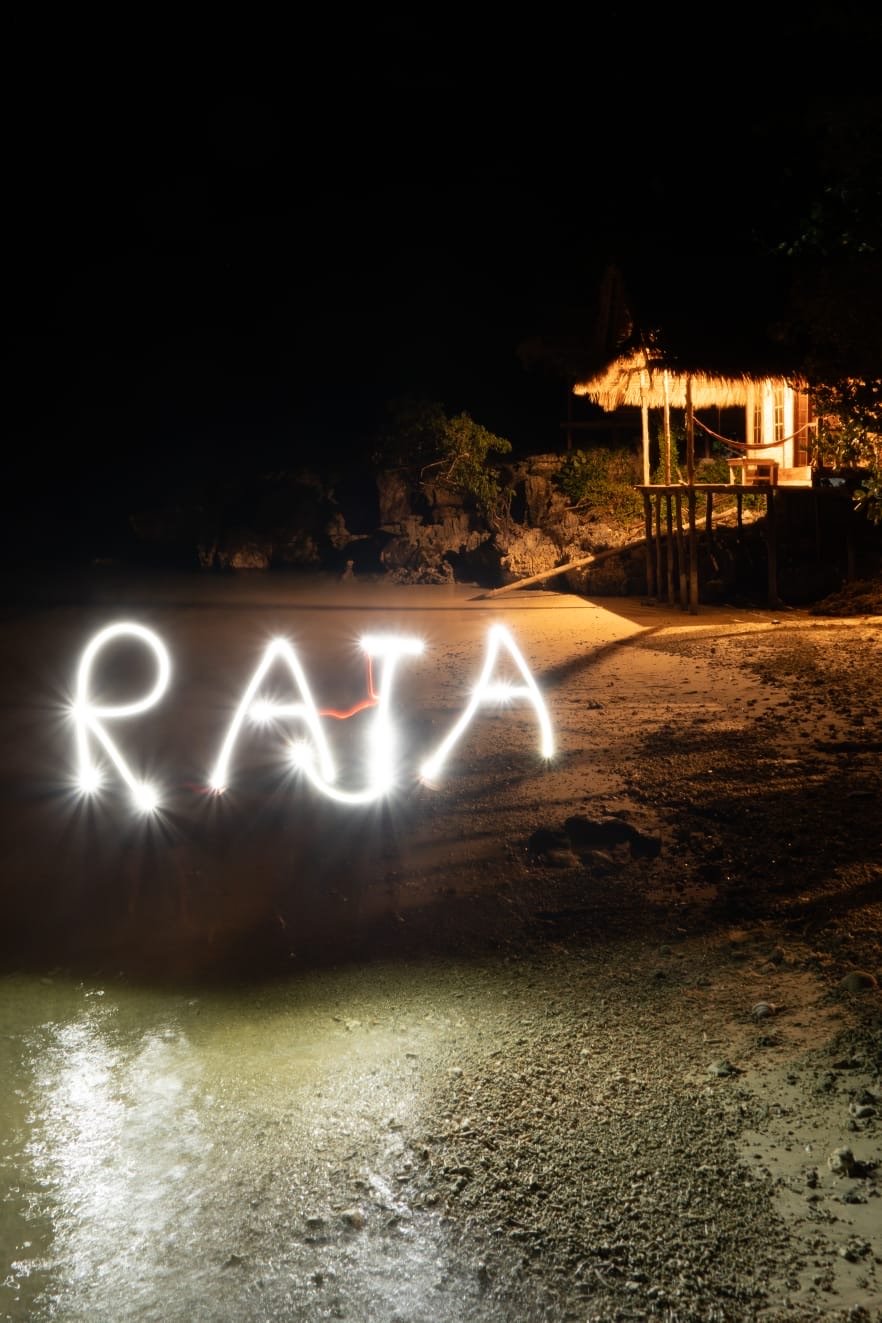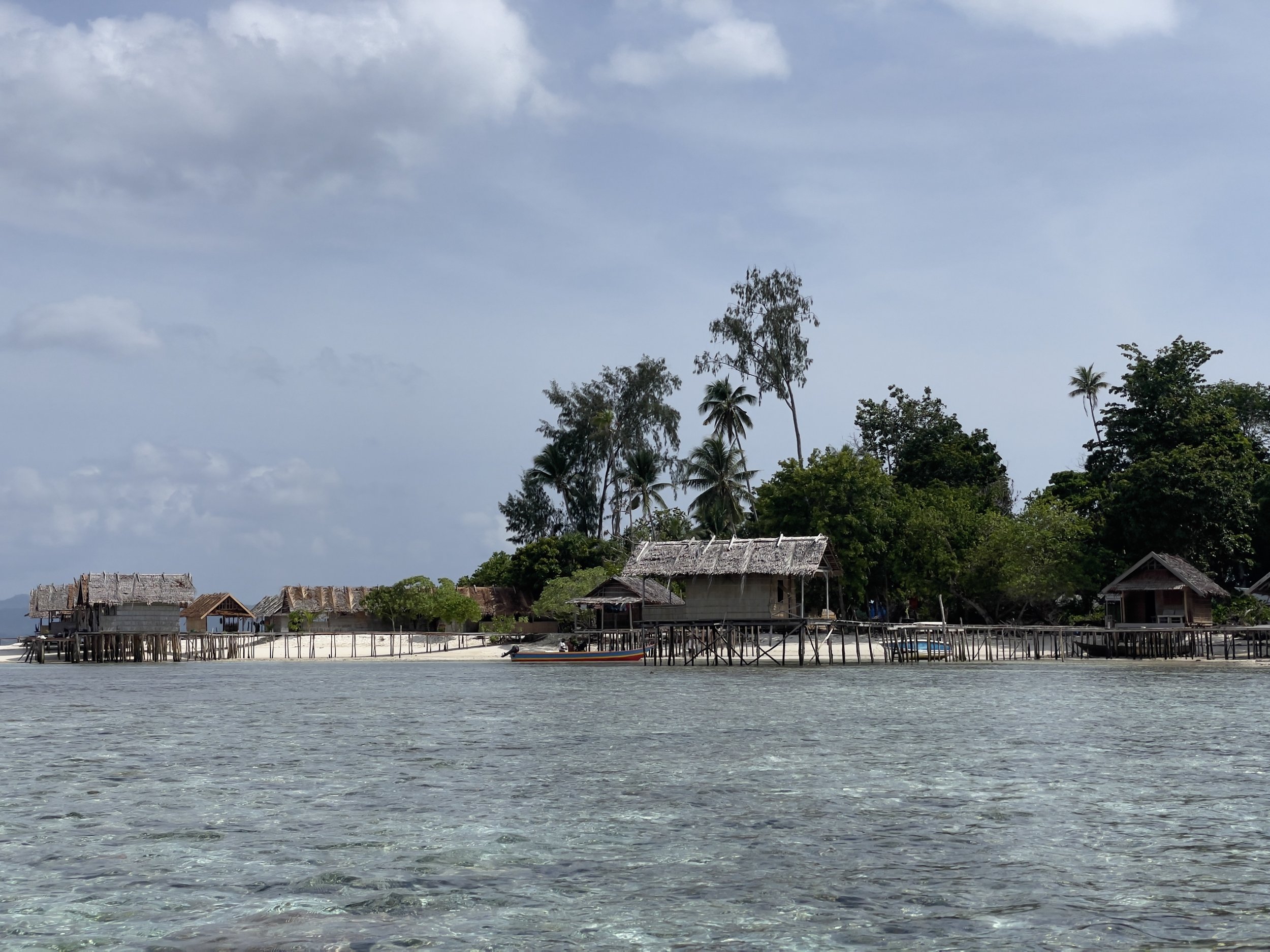Batanta - A Hidden Wonder
Raja Blog Part 2
October 7th, 2023
We woke up, grabbed our packed bags, and headed out to the dock in Waisai to meet up with Erwin, who would be our guide during our trip to his homestay on the island of Batanta. Batanta is one of the four islands of Raja Ampat, but it is about 2 hours away from Waigeo and usually gets passed over due to the never-ending journey it takes just to get to Raja in the first place. We hopped into a long boat and started the voyage to our homestay for the next three days.
Every time we had a decent wave, the boat would teeter, and I would tense up, hoping it would not flip. You are constantly adjusting and bobbing around so the boat does not tip, but eventually, we got to an open patch where the water was shallow. The winds were no longer making waves, and our excitement grew because the visibility of the water and the reefs that we could see from the boat were incredible. After almost two hours of riding, we could finally see the edge of the beach that Marwes' homestay was on and then the village to the right. As we got close, my excitement grew, taking in this marvelous place. We docked, got our bags, and settled in.
Kat and I immediately grabbed our snorkel gear and headed into the water. The water was clear over here, and the conditions were much better. After exploring, we headed back for lunch.
We were going on an adventure with Erwin at 16:00, so I flew the drone and explored the surrounding area. I spotted stunning mangroves, and the tallest mountain, Ganung Batanta in Raja, which was 10 km away. This mountain was 1.5km tall, which was amazing because, at the top, you could see species not found in any other places around the islands. It was not on our schedule, but next time I come, I would love to climb that mountain. As I was flying, Erwin went out on his boat with his spear gun and returned about 30 minutes later with a coral trout, which would be the dinner for everyone.
The time came for us to head to the south and go to an area where Erwin had seen pythons. The canoe ride was about 30 minutes, and we arrived at this mangrove area full of gorgeous coral. We glided through a small canal until it opened into a lake.
There was a cuscus in a tree, but we did not see anything else. I launched my drone to get a shot of the surrounding mangrove forest, which was stunning for me to see, as we do not have many mangroves in the Maldives.
We then headed to a lagoon area, and I was so mad at myself for not bringing my large lens because it was full of bird life. We spotted four pairs of the Blyth’s hornbill, with one perfectly posed on a palm tree. That would have made for such a great photo! Sometimes, you must sit back and enjoy the moment without looking through a lens.
We then returned to camp, and I launched my drone again just before sundown. At dinner, we ate the coral trout that Erwin caught earlier that day, which was delicious.
We then went for a quick night snorkel, and I was able to use my new light for the first time. The next day would be a big one, so we went to bed early.
October 8th
We woke up, got ready for our day, and headed out at 7:30 to the first destination, which was the manta cleaning station. It took us about 45 minutes to reach this spot. We pulled the boat onto an island, got into our freediving gear, and swam for about 15 minutes through a gorgeous section of the reef. Erwin called out for us to come quickly, and to our surprise, three gorgeous manta rays were facing the heavy current, allowing the little fish to swim up and clean them.
The most amazing thing was that one of the mantas was a melanistic manta. Raja is known to have a large population of solid black mantas. Instead of black spots on their bellies, they have white spots. The mantas around here contain melanistic genes, so when they breed, there is a higher number of them here than in other places. One unique thing about these mantas and how you can tell they are related is that the tail has a distinct bend. Deformities like this can be common amongst recessive genes. We hung around with the mantas and free dove down to get photos.
The current was strong, so Kat and I did not have the longest breath holds. I saw the all-black one, took a deep breath, and went down next to it. I held onto a rock to keep me on the ground, and a manta came swimming to me, looked me in my eyes, and then gave my head a gentle pat with the tip of its fin before moving on. My lungs were burning, so I headed up for air, but that was my most exciting manta encounter to date. Afterward, we were tired and returned to the beach to relax with fresh coconut drinks before continuing our journey south to a remote waterfall.
It took about 35 minutes for us to reach the bay with the river that would lead us to the waterfall. We exited the boat, stretched, and ate before the walk.
We started the trek, and Erwin pointed to an area with mangroves and water and said he had seen a saltwater crocodile there before. Saltwater crocodiles can be found in Raja. It is always good to be croc-wise in Croc territory. Along the river's edge, we could see mudskippers and areas that were clear enough for us to see the bottom and too shallow for a crocodile, so we walked through the river.
Around 500 meters up the river, we all heard a sound in the forest. It sounded like a stick breaking but not something small, as if a larger animal had stepped onto a branch. I stepped up into the forest with Erwin, who was about 7 meters in front of me, and saw something large moving through the jungle. After a minute, I registered that this animal was one I had never seen before. Erwin whispered the bird's name because he had forgotten the English name for the large bird. This incredible and potentially dangerous bird was the northern cassowary, which is rare to see due to the dense jungle on these islands. I got my camera, and we followed it, but unfortunately, the forest was too dense, so I could not get a good photo. I did, however, get a great look at the bird's gorgeous yellow throat, which defines these from the other species found in Australia. This species has yellow and red in their throats, while the southern one has only red.
We circled back to our stuff and headed along the riverbed, searching for more wildlife and the waterfall. When we got to the waterfall, we were the only people there, so we relaxed and played in the water for about 30 minutes. I launched my drone to get different shots, and Kat was off looking for bugs.
We then returned to the boat and chased after mangrove monitors unsuccessfully. The next boat ride was about 45 minutes to an area with wobbegongs, and we got in the water for a snorkel and pee break. I did not see any wobbegongs, but I enjoyed looking around the gorgeous coral.
We returned to the homestay around 15:00 and had a much-needed meal after such a long, adventurous day in the sun. At around 17:00, I headed out with Erwin to explore his village and look for birds. The hour before sunset is the best time to fly a drone, so I brought it along with my large lens. We saw ducks and birds but nothing else. I switched gears and launched my drone to get photos of the village.
I switched gears and launched my drone to get photos of the village. I asked Erwin how old the village was, and he wrote in the sand that it was 1100 years old. That is crazy because this village I was standing in was functioning long before pirates set foot in the Bahamas. It was impressive walking through the village and having everyone say hello. When Erwin and I walked past the village, I asked him about a depression that I could see through the tree line. It was their graveyard, and as a foreigner, I was not allowed to go there. It is wise to always be with a local in Papua because you never know what areas are sacred. I got gorgeous photos of the surrounding area and the village and then walked back to our homestay for a lovely dinner.
That night, Kat played around with long-exposure photography, and we got to bed early as the next day we were heading out to the Raja Biodiversity Resort.
October 9th
Before sunrise, I launched my drone to take the last photos before heading out at 10:00 for our next destination. I was sad to leave this place, and I would like to spend more time in Batanta. It was that incredible! Next time, I will visit the other waterfall near the Manta area, search for dugongs, and try to hike the mountain. I would like to stay at least seven days for sure.
We got on the boat and during the two-hour journey to our next destination, we crossed through the gorgeous islands of Kri and Mansuar and got a look at a place I was considering staying because the dive center had complimentary reviews.
However, I chose the Raja Biodiversity Resort because I know people who have gone there before, and it looked amazing. It was also on the island of Gam, which had the other species of terrestrial wildlife I was looking for. We got to the resort at 10:30, said our goodbyes, and checked in for our next adventure in these magical islands.












